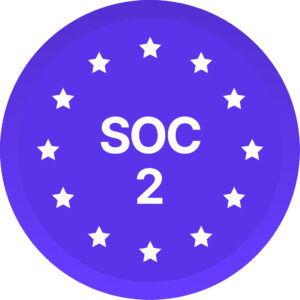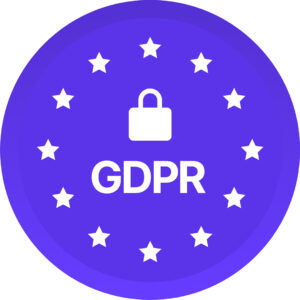When we talk about building high-performing, innovative, and resilient teams, the conversation often lands on the “usual” diversity markers: gender, race, or generational differences. But too often, a critical dimension often overlooked is neurodiversity.
Neurodiversity recognizes that brains process information differently. This includes people who identify as autistic, have ADHD, dyslexia, dyspraxia, or live with mental health conditions. These differences represent natural variations that bring creativity, resilience, and adaptability to organizations.
The problem? Hiring systems are usually built for one “ideal” way of communicating and performing. For many neurodiverse candidates, this creates unnecessary barriers. The opportunity lies in redesigning our hiring processes to be neuroinclusive, so every candidate has an equitable chance to showcase their best work.
Why neuroinclusive hiring matters
Inclusive hiring goes beyond moral or compliance obligations — this represents a strategic advantage. Research consistently shows that diverse teams outperform homogeneous ones in innovation and problem-solving. Yet, according to Deloitte, as many as 85% of people on the autism spectrum are unemployed or underemployed, despite having equal or higher levels of capability.
This unemployment rate exists not because neurodiverse individuals lack talent, but because hiring systems unintentionally screen them out. Job postings that demand “excellent verbal communication,” timed psychometric tests, or “culture fit” criteria that reward similarity over contribution which create hidden barriers.
Shifting from “culture fit” to “culture add” helps organizations tap into overlooked talent and strengthen team intelligence.
What neuroinclusive hiring looks like in practice
Below are practices that employers can adopt to build a fairer system:
1. Write accessible job descriptions
- Avoid jargon, buzzwords, or unnecessarily broad requirements.
- Separate “must-have” skills from “nice-to-have” ones.
- Use plain language and bullet points.
- Offer alternative formats (PDF, plain text, accessible online posting).
A neuroinclusive job description is clear, specific, and flexible enough to invite applicants who may have unconventional but valuable career paths.
2. Provide interview questions in advance
Traditional interviews are designed to reward quick verbal recall under pressure. But not everyone processes information that way. For candidates who need time to organize their thoughts, giving interview questions (or at least themes) in advance levels the playing field.
For example:
- Send candidates 4–6 guiding questions a few days before the interview.
- During the interview, let them know which of those will be asked, and allow follow-up questions.
This approach doesn’t compromise the evaluation process. Instead, it gives people equal opportunity to prepare and showcase their skills.
3. Offer multiple ways to interview
Not everyone thrives in face-to-face conversations. Some candidates may shine in written responses, work samples, or practical assessments. Consider:
- Video submissions or asynchronous recordings.
- Skills demonstrations instead of “tell me about a time” questions.
- Group interviews balanced with individual options.
Choice matters. When candidates can select the format that best suits their communication style, you get a clearer picture of their capabilities.
4. Rethink assessment tools
Timed aptitude tests, “culture fit” quizzes, or personality assessments can disadvantage neurodiverse candidates. Instead, use assessments that measure real job-related skills and allow adequate time.
For instance:
- Replace timed logic puzzles with untimed problem-solving exercises.
- Use work simulations that mirror day-to-day tasks.
- Evaluate outcomes, not the speed of completion.
5. Train hiring managers
A neuroinclusive hiring policy is only as effective as the people applying it. Train interviewers to:
- Recognize different communication styles.
- Avoid bias based on eye contact, body language, or social fluency.
- Ask open-ended, strength-based questions.
- Provide structured evaluation rubrics so decisions aren’t left to “gut feel.”
When managers understand that a candidate avoiding eye contact isn’t disinterest, but simply a different way of engaging, the process becomes much fairer.
6. Be transparent about the process
Neurodiverse candidates often thrive with predictability. Be explicit about what to expect:
- How many interviews there will be.
- Who will be in the room.
- The length and format of each stage.
Transparency not only supports neurodiverse candidates but also reduces anxiety for all applicants, leading to stronger performance overall.
7. Invite accommodation conversations early
Instead of waiting for candidates to ask, proactively communicate:
“We are committed to an inclusive process. If you would benefit from accommodations (for example: extra time, alternative interview formats, or breaks), please let us know.”
This signals psychological safety and reduces the stigma candidates may feel about requesting support.
8. Onboard with inclusion in mind
Hiring doesn’t stop when the offer letter is signed. A neuroinclusive team culture starts on day one. Think about:
- Clear written guides alongside verbal instructions.
- Sensory-friendly workspaces (lighting, noise control).
- Buddy or mentorship systems to help new hires navigate unwritten rules.
Case example: Sharing questions in advance
Two equally skilled candidates apply for a project manager role.
Candidate A processes information quickly, thrives in verbal exchanges, and is comfortable with ambiguity.
Candidate B is equally skilled but processes information more slowly, preferring to think through responses.
A traditional interview rewards Candidate A. But when questions are shared in advance, Candidate B’s strengths are visible — expanding the chance of hiring the best person, not just the fastest responder.
How can you build a neuroinclusive policy
Inclusive hiring doesn’t happen by chance, it requires structure. Organizations should embed neuro-inclusion into their recruitment policies and checklists. For example:
- Inclusive hiring checklist: Accessibility review of postings, structured interview rubrics, advance questions.
- Bias mitigation tips for interviewers: Reminders not to equate extroversion with leadership potential, or fluency with competence.
- Policy alignment: Link your hiring practices with ISO 30415 standards on diversity and inclusion, and GDEIB benchmarks for equitable systems.
Embedding these into policy signals organizational commitment and provides accountability beyond individual good intentions.
Benefits of neuroinclusive hiring
Organizations that invest in neuroinclusive practices see:
- Greater innovation from diverse perspectives
- Higher retention and psychological safety
- Stronger employer brand and reputation
- Compliance with accessibility and human rights standards
Most importantly: workplaces where everyone can thrive.
Taking action
The future of work requires designing for difference, not sameness.
Ask yourself:
- Are our hiring systems built for only one way of thinking?
- What talent might we be unintentionally screening out?
- How can we move from barriers to bridges?
Neuro-inclusive hiring is a practical step to reimagine recruitment. From sharing interview questions to embedding structured policies, the goal isn’t just to fill roles but to build a community of belonging where every brain has a place at the table.
Sources
Employment & Unemployment Rates
- Austin, R. D., & Pisano, G. P. (2017, May). Neurodiversity as a competitive advantage. Harvard Business Review. https://hbr.org/2017/05/neurodiversity-as-a-competitive-advantage
- Deloitte. (2022). Neurodiversity in the workplace. Deloitte Insights. https://www.deloitte.com/us/en/insights/topics/talent/neurodiversity-in-the-workplace.html
- MIT Sloan Management Review. (2023). Building the neurodiversity talent pipeline for the future of work. MIT Sloan. https://sloanreview.mit.edu/article/building-the-neurodiversity-talent-pipeline-for-the-future-of-work
- UK Government. (2024, February). Buckland review of autism employment. Department for Work and Pensions. https://www.gov.uk/government/publications/buckland-review-of-autism-employment
- World Economic Forum. (2023, April). Here’s how employers are addressing neurodiversity. https://www.weforum.org/agenda/2023/04/heres-how-employers-are-addressing-neurodiversity
Standards & Benchmarks
- International Organization for Standardization. (2021). ISO 30415:2021 Human resource management—Diversity and inclusion. https://www.iso.org/standard/76559.html
- ANSI. (2021, June). New ISO standard supports diversity and inclusion in the workplace. American National Standards Institute. https://www.ansi.org/news/standards-news/all-news/2021/06/6-1-21-new-iso-standard-supports-diversity-and-inclusion-in-the-workplace
- Centre for Global Inclusion. (2021). Global diversity, equity & inclusion benchmarks (GDEIB): Standards for organizations around the world. https://centreforglobalinclusion.org/gdeib
Inclusive Hiring Practices & Interview Accommodations
- Job Accommodation Network (JAN). (2025). Accommodation ideas: Neurodiversity. U.S. Department of Labor, Office of Disability Employment Policy. https://askjan.org/disabilities/Neurodiversity.cfm
- Job Accommodation Network (JAN). (2025). Employers’ practical guide to reasonable accommodation during the hiring process. U.S. Department of Labor. https://askjan.org/publications/Topic-Downloads.cfm?pubid=1016570
- Advisory, Conciliation and Arbitration Service (ACAS). (2025). Reasonable adjustments: Adjustments for neurodiversity. https://www.acas.org.uk/reasonable-adjustments-for-neurodiversity
- ACAS. (2023). Neurodiversity at work: Making your organisation neuroinclusive. https://www.acas.org.uk/neurodiversity-at-work
- Scope. (2024). Asking for adjustments at interview. https://www.scope.org.uk/advice-and-support/interview-adjustments
- People Management. (2025, March). Neurodiversity in the workplace: Creating an inclusive culture. Chartered Institute of Personnel and Development. https://www.peoplemanagement.co.uk
Cost & Impact of Accommodations
- Job Accommodation Network (JAN). (2025). Workplace accommodations: Low cost, high impact. https://askjan.org/topics/costs.cfm
- U.S. Department of Labor. (2023, October 24). News release: Nearly half of all workplace accommodations cost employers nothing. https://www.dol.gov/newsroom/releases/odep/odep20231024
- Job Accommodation Network (JAN). (2020). Workplace accommodations: Low cost, high impact (PDF). University of Kentucky Human Development Institute. https://hdi.uky.edu/wp-content/uploads/2020/05/JAN-Low-Cost-High-Impact.pdf Job Accommodation Network (JAN). (2025). Costs and benefits of workplace accommodations (Topic brief). https://askjan.org/publications/Topic-Downloads.cfm?pubid=1016571

